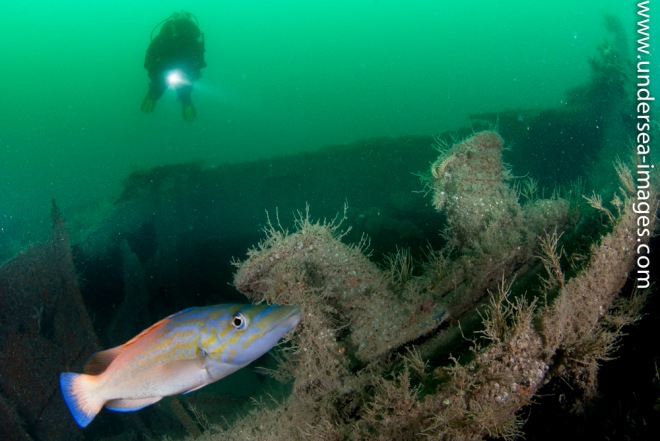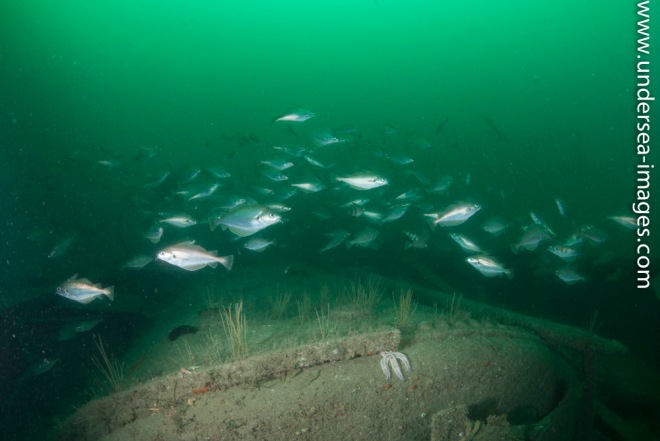
I finally broke my 2021 duck with a dive at Capernwray quarry in Lancashire; the weather was unkind, so a sea dive was not an attractive option. Capernwray is blessed with good visibility and the trout patrolling the shallows are an enticing photographic subject.
I chose to try various long exposure techniques to give an impression of movement. Using an exposure time of 1/4s whilst moving the camera briskly to “overtake” the subject gives a pleasant motion blur (and it tends to hide the backscatter too). A burst of flash at the beginning of the exposure freezes some detail on the subject and adds some colour. In order to maintain a decent depth of field, an aperture of at least f/8 or f/11 is needed and that necessitates as low an ISO setting as possible. The small aperture also forces a high strobe output.
I also tried a zoom blur. It is quite tricky to get the zoom action quick enough to show in the exposure, but it’s probably easier with the camera housed. Underwater, the zoom is accomplished with a flick of the finger on the zoom wheel (rather than gripping and rotating the zoom collar when holding the camera by hand).

I was most pleased with the results when the camera was close to the subject (for these large trout, less than 30cm) and when there is some object in the background. This generates significant motion blur on the background and allows the strobe to illuminate the subject.
These trout are quite large, so too big for any of my macro lenses. I chose my trusty Tokina 10-17 lens, but struggled to get enough opportunities with the fish close enough to fill the frame. A longer lens would have perhaps been better; next time I might try a teleconverter to bring the subject a little closer.
This technique requires a lot of trial and error, and the “hit” rate is pretty low. Nevertheless, I managed to capture half a dozen “keepers”.

 I will be giving a presentation to Worcestershire Camera Club on Tuesday 3rd March 2020, entitled “Adventures in UK Diving”. This photo talk will feature the best of my UK underwater photography over from over the years (including a number of award-winning shots) and I will showcase the amazing beauty and diversity of British sea life. The presentation starts at 19.30 in St Stephen’s Church Hall (Bishop Allenby Hall), St Stephen’s Church, Droitwich Road, Worcester, WR3 7HS. You’re welcome to come along, if you’re interested.
I will be giving a presentation to Worcestershire Camera Club on Tuesday 3rd March 2020, entitled “Adventures in UK Diving”. This photo talk will feature the best of my UK underwater photography over from over the years (including a number of award-winning shots) and I will showcase the amazing beauty and diversity of British sea life. The presentation starts at 19.30 in St Stephen’s Church Hall (Bishop Allenby Hall), St Stephen’s Church, Droitwich Road, Worcester, WR3 7HS. You’re welcome to come along, if you’re interested.











